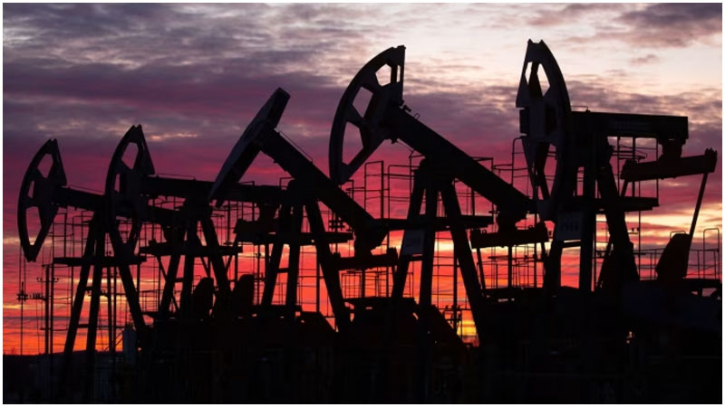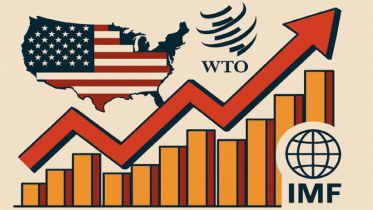Big Oil heeds call to ‘drill, baby, drill' as green transition slows

The world’s leading oil companies are stepping up their hunt for new oil and gas reserves, as a slower than expected transition to clean energy sets the stage for stronger fossil fuel demand for decades to come.
Executives from BP, Chevron, ExxonMobil, Shell and TotalEnergies all used recent earnings calls to highlight how they have begun refocusing on securing new reserves after years of prioritising renewables.
Expectations for a rapid energy transition have moderated in recent years, as elevated inflation and interest rates raised costs and slowed development of renewables.
Geopolitical instability has led governments to prioritise energy security over decarbonisation. US President Donald Trump has directed oil and gas producers to “drill, baby, drill”.
Wood Mackenzie estimates a slower transition could leave the world needing about 5 per cent more oil per year than previously forecast from the mid-2030s. The energy consultancy forecasts that the world will require more than 100bn extra barrels of oil and gas from exploration by 2050 to help fill this gap.
The expectation of greater demand is raising concerns that years of under-investment have left the industry unprepared.
Jessica Ciosek, head of Americas exploration research at Wood Mackenzie, said there was a “huge need” for more oil and gas.
“There is a very big supply gap that M&A cannot solve for in the long run. Companies are refilling a pipeline, not just in drill-ready prospects, but in access to the areas where they would consider drilling.”
Ciosek noted the industry was playing catch-up after neglecting exploration earlier in the decade, choosing instead to focus on slashing costs and gearing up for a quick shift to clean energy.
Last year, a total of 5bn barrels of oil were discovered, according to Rystad, another energy consultancy, equivalent to just 19 per cent of the world’s annual production.
The most striking pivot has come at BP, which spent $15bn since 2021 pursuing a clean-energy strategy that alienated investors.
Under pressure to boost profitability and replace reserves, BP announced in February it would sharply increase investment in oil and gas.
The company now plans to drill 40 exploration wells over the next three years and recently made its biggest discovery in 25 years off the coast of Brazil. Speaking to analysts this week, BP chief executive Murray Auchincloss hailed its recent string of 10 discoveries as historic.
Chevron is also changing tack after years of prioritising cost-cutting and shale investments over riskier deep-water opportunities, which reduced its oil reserves to 9.8bn barrels last year, the lowest in more than a decade.
Chief executive Mike Wirth told analysts on an earnings call this month that he was “not happy with the results out of exploration over the last few years”. In May, he said the company had expanded its “pipeline of future opportunities” by adding 11mn new exploration acres since 2024.
ExxonMobil is branching out after spending the past decade focused largely on Guyana, where it has found nearly 11bn barrels. This week the company signed a deal to study four offshore blocks in Libya, and it is preparing to resume exploration activities in Trinidad and Tobago after a two-decade hiatus.
Explaining the moves to analysts this month, Darren Woods, Exxon’s chief executive, said exploration was a “treadmill we have to stay on”.
TotalEnergies and Shell have similarly underscored their commitment to finding new reserves.
Patrick Pouyanne, chief executive of TotalEnergies, said the French energy major had “reloaded the exploration portfolio” by winning new permits in the US, Malaysia, Indonesia and Algeria.
Shell chief executive Wael Sawan promised “some exciting wells” in the next six to 12 months, highlighting the importance of important basins such as the Gulf of Mexico, Malaysia, and Oman.
“There’s an industry-wide sentiment now that while the energy transition is happening, it is not nearly as rapid as we thought it would be,” said Palzor Shenga, senior upstream analyst at Rystad.
“Even by 2050, oil and gas will still account for about half of the energy mix. There’s a substantial gap to be filled,” he added.
Despite this renewed emphasis, exploration spending remains well below the peaks of the 2010 to 2015 boom years. However, BP and Chevron argue that new technologies enable them to step up exploration without a commensurate increase in budgets.
Chevron, for example, is deploying suitcase-sized nodes on the ocean floor, filled with batteries, clocks and other components. They enable the company to track seismic reflections and produce sharper images, helping to locate oil and gas deposits even in complex geology.
Liz Schwarze, Chevron’s vice-president of exploration, said new seismic and artificial intelligence technologies were reducing data-processing times from months to minutes.
BP cited similar technological breakthroughs that recently enabled it to plan and drill a complex well in Azerbaijan in days rather than months.
However, Fraser McKay, head of upstream analysis at Wood Mackenzie, cautioned that oil majors needed to rebuild expertise and a strong portfolio of “drill-ready” prospects.
“Companies want to do more exploration [...] but there’s a need to replenish the portfolio,” he said. “If you look at their annual reports it looks like they have got entire countries under license, but in actual fact drill-ready prospects are much fewer and far between”.—FT
.png)




